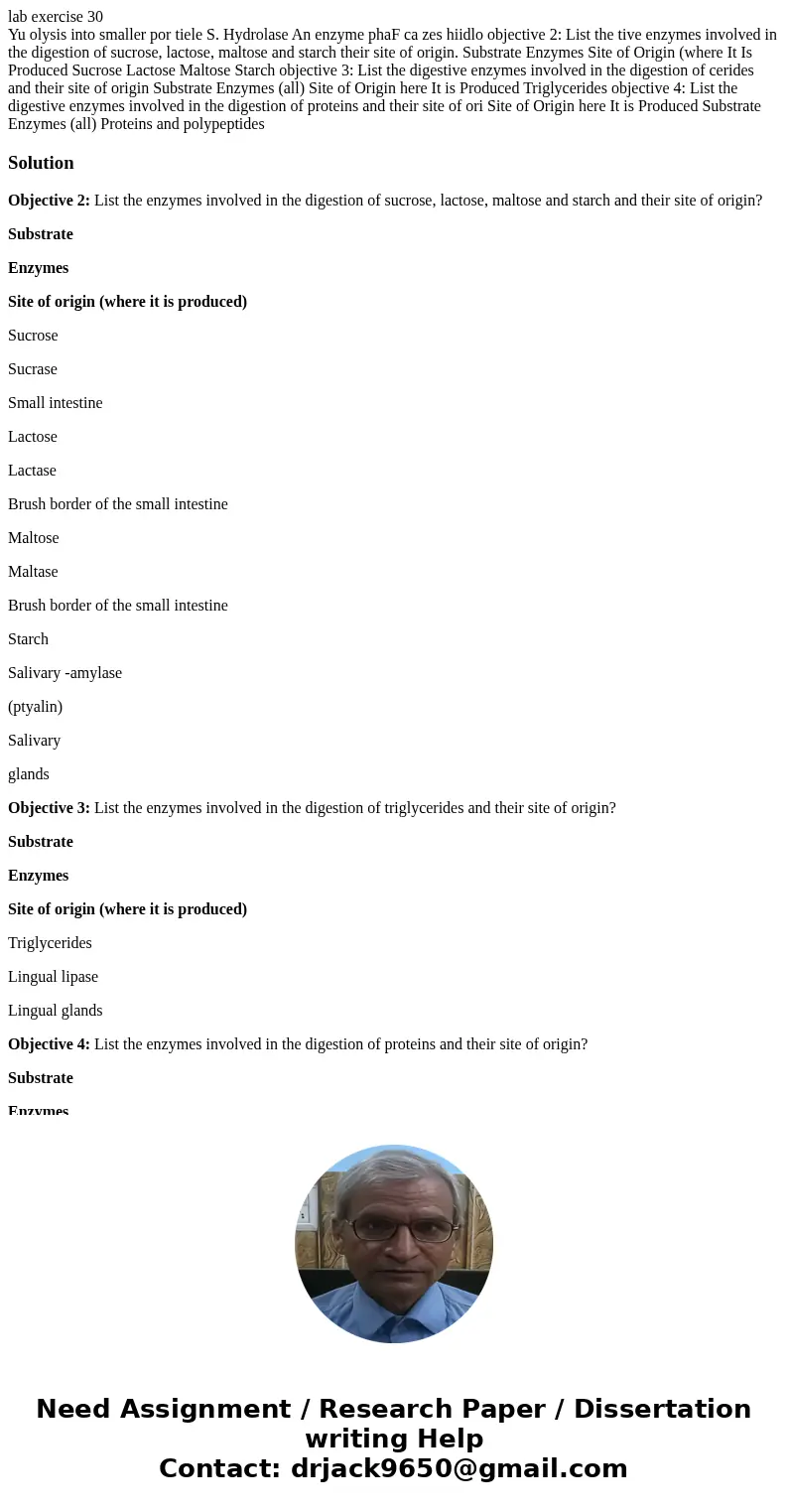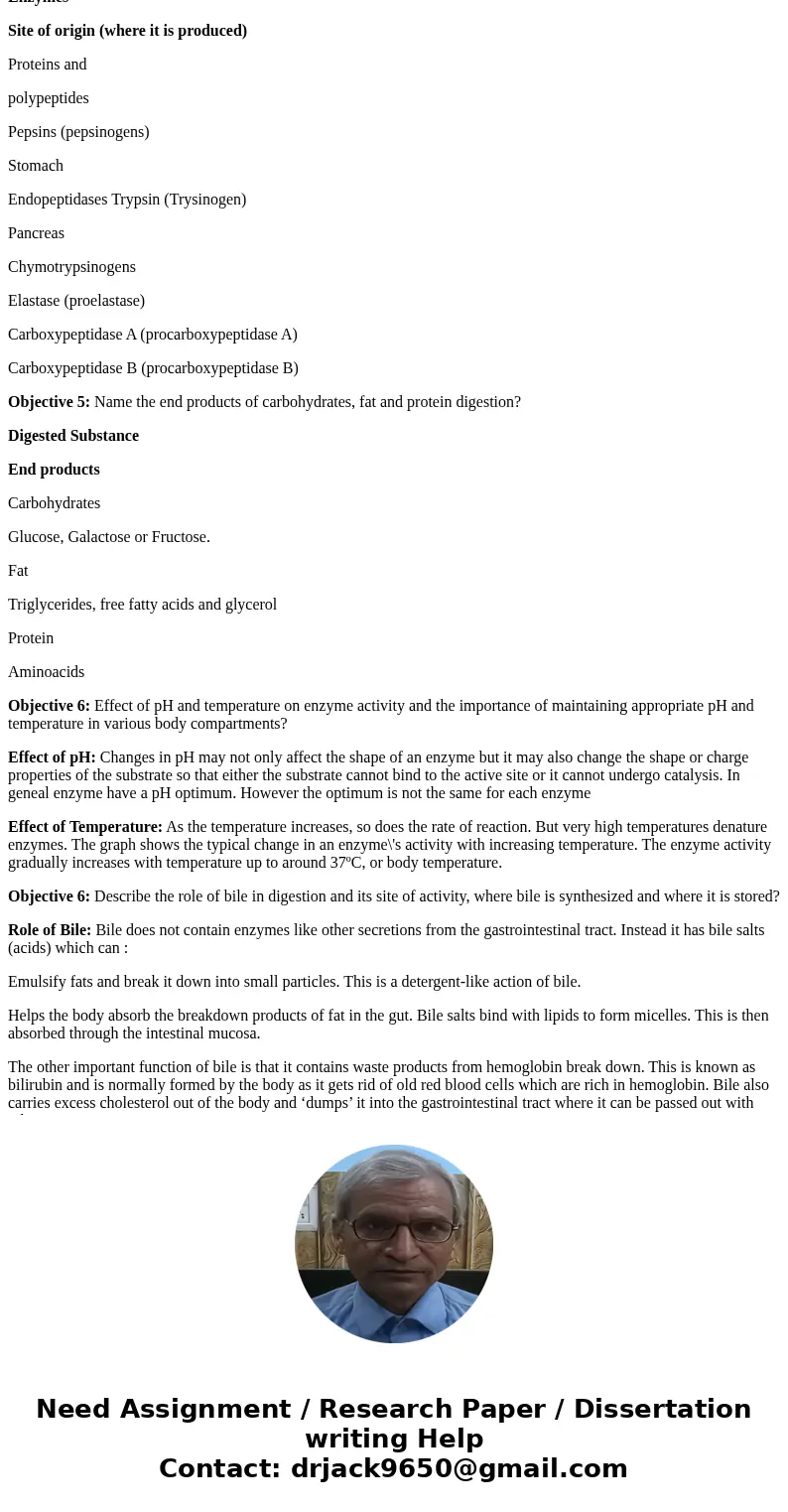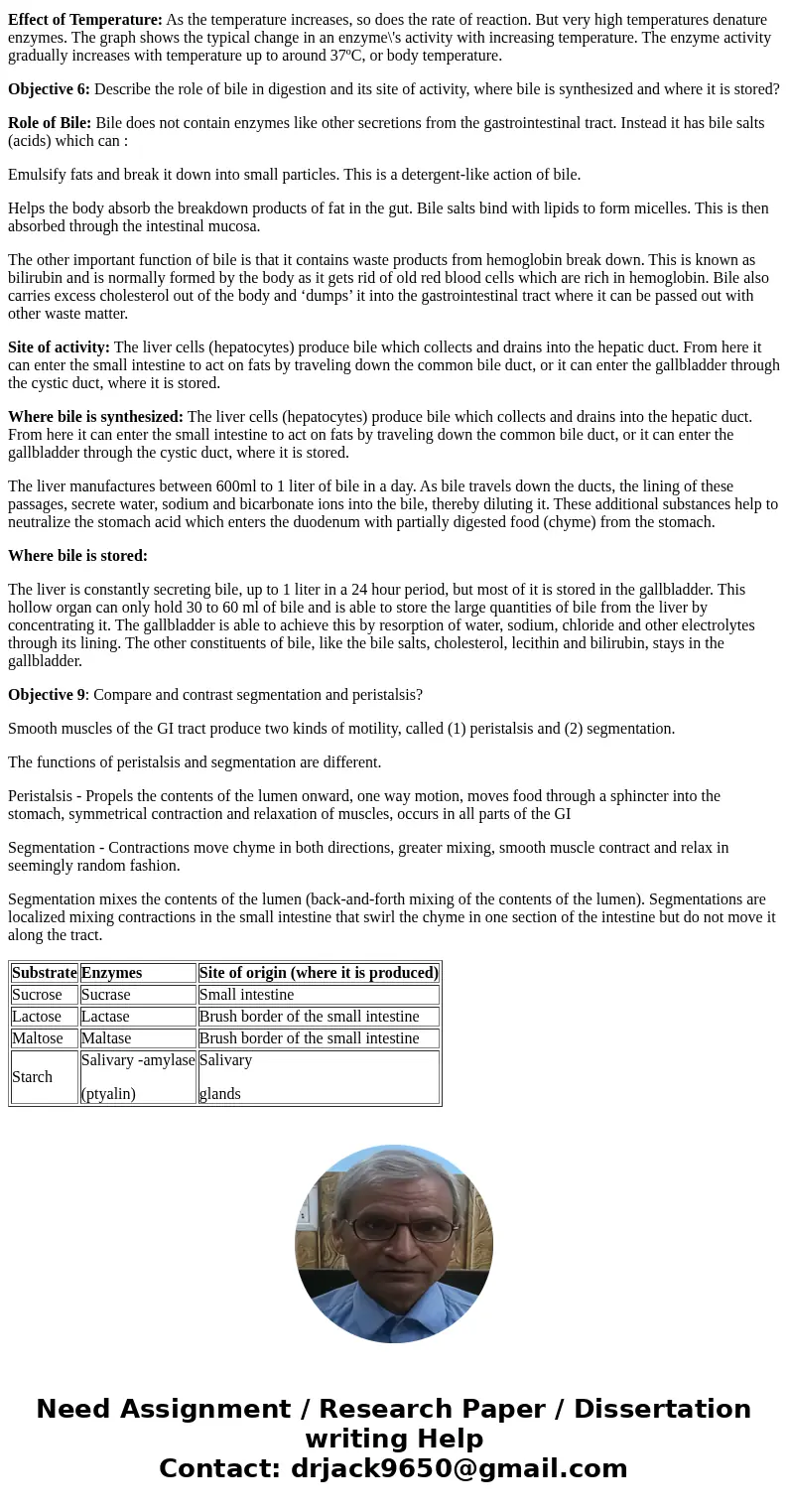lab exercise 30 Yu olysis into smaller por tiele S Hydrolase
Solution
Objective 2: List the enzymes involved in the digestion of sucrose, lactose, maltose and starch and their site of origin?
Substrate
Enzymes
Site of origin (where it is produced)
Sucrose
Sucrase
Small intestine
Lactose
Lactase
Brush border of the small intestine
Maltose
Maltase
Brush border of the small intestine
Starch
Salivary -amylase
(ptyalin)
Salivary
glands
Objective 3: List the enzymes involved in the digestion of triglycerides and their site of origin?
Substrate
Enzymes
Site of origin (where it is produced)
Triglycerides
Lingual lipase
Lingual glands
Objective 4: List the enzymes involved in the digestion of proteins and their site of origin?
Substrate
Enzymes
Site of origin (where it is produced)
Proteins and
polypeptides
Pepsins (pepsinogens)
Stomach
Endopeptidases Trypsin (Trysinogen)
Pancreas
Chymotrypsinogens
Elastase (proelastase)
Carboxypeptidase A (procarboxypeptidase A)
Carboxypeptidase B (procarboxypeptidase B)
Objective 5: Name the end products of carbohydrates, fat and protein digestion?
Digested Substance
End products
Carbohydrates
Glucose, Galactose or Fructose.
Fat
Triglycerides, free fatty acids and glycerol
Protein
Aminoacids
Objective 6: Effect of pH and temperature on enzyme activity and the importance of maintaining appropriate pH and temperature in various body compartments?
Effect of pH: Changes in pH may not only affect the shape of an enzyme but it may also change the shape or charge properties of the substrate so that either the substrate cannot bind to the active site or it cannot undergo catalysis. In geneal enzyme have a pH optimum. However the optimum is not the same for each enzyme
Effect of Temperature: As the temperature increases, so does the rate of reaction. But very high temperatures denature enzymes. The graph shows the typical change in an enzyme\'s activity with increasing temperature. The enzyme activity gradually increases with temperature up to around 37ºC, or body temperature.
Objective 6: Describe the role of bile in digestion and its site of activity, where bile is synthesized and where it is stored?
Role of Bile: Bile does not contain enzymes like other secretions from the gastrointestinal tract. Instead it has bile salts (acids) which can :
Emulsify fats and break it down into small particles. This is a detergent-like action of bile.
Helps the body absorb the breakdown products of fat in the gut. Bile salts bind with lipids to form micelles. This is then absorbed through the intestinal mucosa.
The other important function of bile is that it contains waste products from hemoglobin break down. This is known as bilirubin and is normally formed by the body as it gets rid of old red blood cells which are rich in hemoglobin. Bile also carries excess cholesterol out of the body and ‘dumps’ it into the gastrointestinal tract where it can be passed out with other waste matter.
Site of activity: The liver cells (hepatocytes) produce bile which collects and drains into the hepatic duct. From here it can enter the small intestine to act on fats by traveling down the common bile duct, or it can enter the gallbladder through the cystic duct, where it is stored.
Where bile is synthesized: The liver cells (hepatocytes) produce bile which collects and drains into the hepatic duct. From here it can enter the small intestine to act on fats by traveling down the common bile duct, or it can enter the gallbladder through the cystic duct, where it is stored.
The liver manufactures between 600ml to 1 liter of bile in a day. As bile travels down the ducts, the lining of these passages, secrete water, sodium and bicarbonate ions into the bile, thereby diluting it. These additional substances help to neutralize the stomach acid which enters the duodenum with partially digested food (chyme) from the stomach.
Where bile is stored:
The liver is constantly secreting bile, up to 1 liter in a 24 hour period, but most of it is stored in the gallbladder. This hollow organ can only hold 30 to 60 ml of bile and is able to store the large quantities of bile from the liver by concentrating it. The gallbladder is able to achieve this by resorption of water, sodium, chloride and other electrolytes through its lining. The other constituents of bile, like the bile salts, cholesterol, lecithin and bilirubin, stays in the gallbladder.
Objective 9: Compare and contrast segmentation and peristalsis?
Smooth muscles of the GI tract produce two kinds of motility, called (1) peristalsis and (2) segmentation.
The functions of peristalsis and segmentation are different.
Peristalsis - Propels the contents of the lumen onward, one way motion, moves food through a sphincter into the stomach, symmetrical contraction and relaxation of muscles, occurs in all parts of the GI
Segmentation - Contractions move chyme in both directions, greater mixing, smooth muscle contract and relax in seemingly random fashion.
Segmentation mixes the contents of the lumen (back-and-forth mixing of the contents of the lumen). Segmentations are localized mixing contractions in the small intestine that swirl the chyme in one section of the intestine but do not move it along the tract.
| Substrate | Enzymes | Site of origin (where it is produced) |
| Sucrose | Sucrase | Small intestine |
| Lactose | Lactase | Brush border of the small intestine |
| Maltose | Maltase | Brush border of the small intestine |
| Starch | Salivary -amylase (ptyalin) | Salivary glands |



 Homework Sourse
Homework Sourse